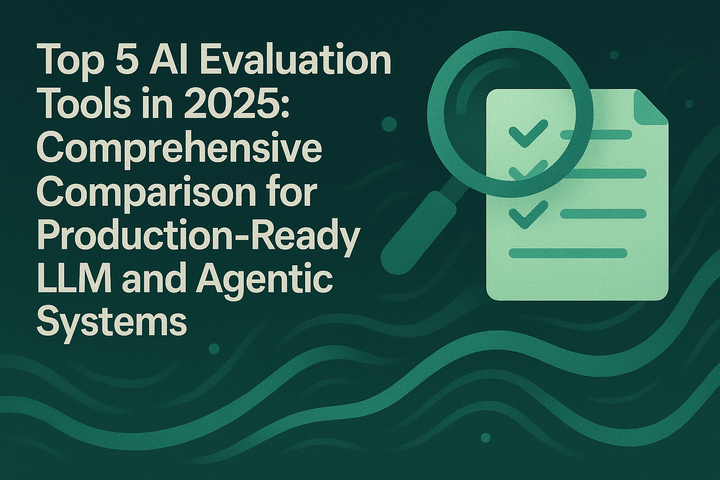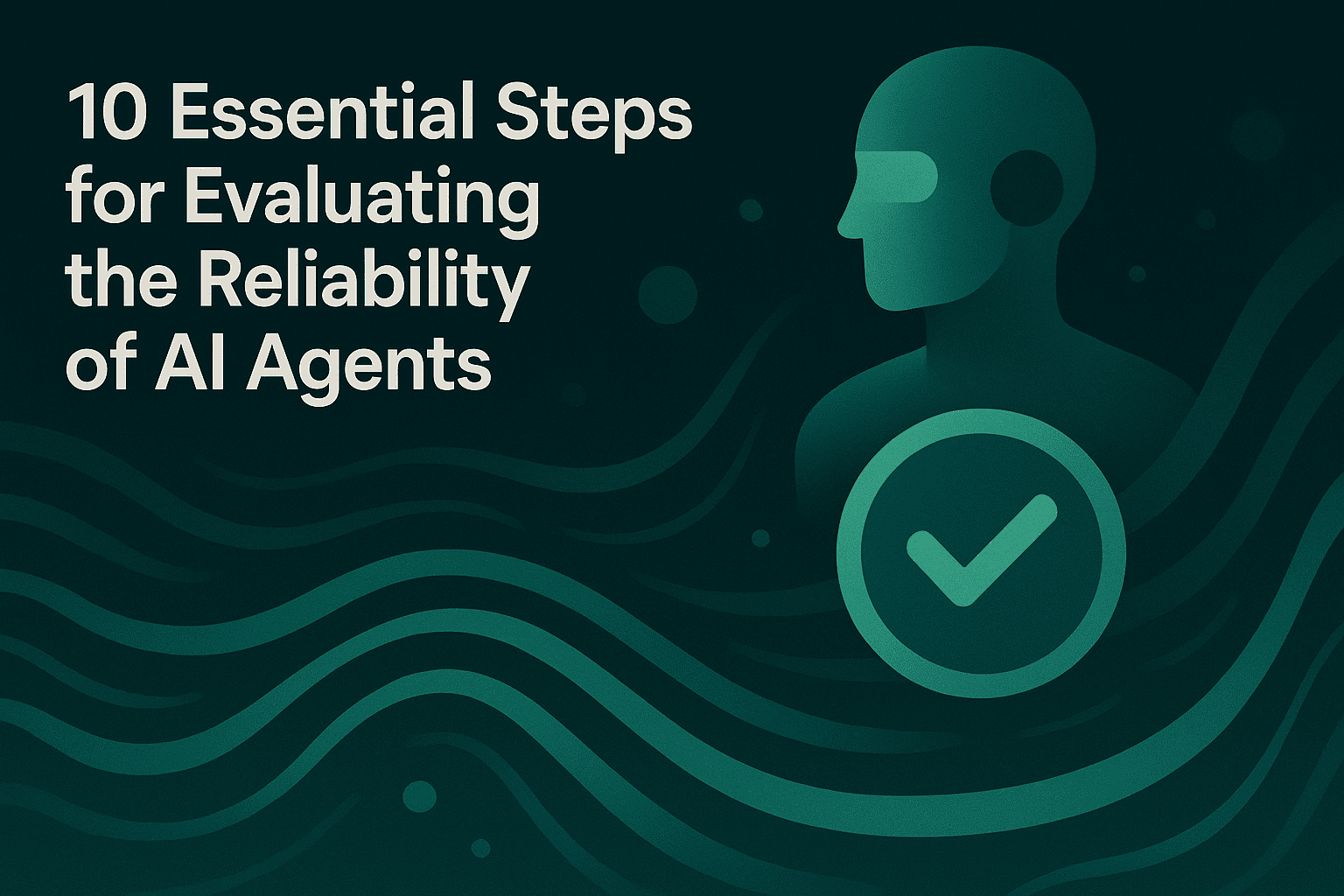How to Implement Effective A/B Testing for AI Agent Prompts

TL;DR
A/B testing is essential for optimizing AI agent prompts and improving application performance. This systematic approach allows teams to compare prompt variations, measure real-world impact, and make data-driven decisions. Research shows that prompt design significantly affects output quality, with variations producing performance differences of up to 40% depending on structure and wording. By implementing rigorous A/B testing frameworks that combine automated evaluations with human oversight, AI teams can reduce hallucinations, enhance user satisfaction, and deploy agents with confidence. Platforms like Maxim AI streamline this process through integrated experimentation, evaluation, and observability workflows.
Understanding A/B Testing for AI Agent Prompts
A/B testing for AI prompts involves systematically comparing two or more prompt variations to determine which produces superior outcomes across predefined metrics. Unlike traditional software A/B tests, prompt testing requires specialized considerations for the non-deterministic nature of large language models.
The foundation of effective prompt A/B testing lies in creating controlled experiments where only one variable changes between versions. This isolation allows teams to attribute performance differences directly to specific prompt modifications rather than confounding factors.
Why A/B Testing Matters for Prompt Engineering
Prompt engineering accounts for 30-40% of time spent in AI application development. Without systematic testing, teams rely on intuition and anecdotal evidence when selecting prompts for production deployment. This approach introduces significant risk, as research from the Wharton Generative AI Labs demonstrates that identical prompts can produce inconsistent answers under identical conditions.
A/B testing provides objective evidence for prompt effectiveness by anchoring evaluations to real user metrics. These metrics include task completion rates, response accuracy, user satisfaction scores, latency measurements, and cost per interaction. By measuring these outcomes across prompt variations, teams can identify configurations that deliver measurable improvements.
The stakes are particularly high for production AI applications. A poorly chosen prompt can lead to increased hallucination rates, degraded user experience, and higher operational costs. Conversely, optimized prompts improve reliability, reduce compute expenses, and enhance the overall quality of AI-powered experiences.
Establishing Your A/B Testing Framework
Building an effective A/B testing framework requires careful planning and infrastructure. The framework should support the complete testing lifecycle from hypothesis formulation through result analysis and deployment.
Defining Clear Hypotheses and Success Metrics
Every A/B test should begin with a measurable hypothesis. A well-structured hypothesis follows the format: "If [specific change to prompt], then [expected user reaction], leading to [conversion metric improvement]."
Select one primary metric per test to avoid the multiple comparisons problem. Common primary metrics include:
- Task Completion Rate: Percentage of user interactions where the agent successfully completed the requested task
- Response Accuracy: Measured through automated evaluators or human review against ground truth
- User Satisfaction: Collected through explicit feedback mechanisms like thumbs up/down or numerical ratings
- Latency: Time from user input to complete response delivery
- Cost Efficiency: Tokens consumed per successful interaction
Supplement your primary metric with guardrail metrics that ensure prompt changes don't introduce regressions in other areas. If optimizing for response speed, monitor accuracy to ensure faster responses aren't sacrificing quality.
Designing and Executing Prompt Variations
The art of prompt A/B testing lies in creating variations that test specific hypotheses while maintaining consistency across other dimensions.
Creating Meaningful Prompt Variants
Start with your baseline prompt as the control condition. When creating test variants, modify only one element at a time to maintain experimental validity. Common dimensions for variation include:
- Instruction Clarity: Comparing explicit step-by-step instructions against high-level guidance
- Context Provision: Testing different amounts of background information or examples
- Output Format: Specifying structured formats versus open-ended responses
- Reasoning Scaffolds: Adding chain-of-thought prompting or other reasoning techniques
- Tone and Style: Adjusting formality, conciseness, or personality traits
Research on prompting strategies shows that hybrid prompting, which combines explicit instructions with reasoning scaffolds and format constraints, consistently produces superior results for complex tasks. However, the optimal approach varies by use case, making empirical testing essential.
Document each variant meticulously using prompt versioning systems. Include version numbers, change descriptions, creation timestamps, and the hypothesis being tested. This documentation enables reproducible experiments and knowledge sharing across teams.
Managing the Testing Process
Run tests for sufficient duration to capture representative usage patterns. Account for day-of-week effects, seasonal variations, and other temporal factors that might influence user behavior. Most tests should run for at least one full week to smooth out these variations.
Monitor your tests continuously through real-time dashboards. While you shouldn't stop tests prematurely, active monitoring helps identify serious issues that warrant immediate intervention, such as significantly elevated error rates or user complaints.
Log comprehensive metadata for each interaction, including the prompt variant shown, user characteristics, timestamps, latency measurements, and outcome indicators. This rich dataset enables detailed post-test analysis and hypothesis generation for future experiments.
Evaluating Prompt Performance
Rigorous evaluation separates successful A/B testing programs from those that generate misleading results. Combine automated evaluations with human oversight for comprehensive quality assessment.
Automated Evaluation Methods
Automated evaluators enable scalable assessment of prompt outputs across large test suites. Maxim AI's evaluation framework provides multiple evaluation approaches:
- Deterministic Evaluators: Rule-based checks for format compliance, keyword presence, or output structure
- Statistical Evaluators: Quantitative metrics like response length, sentiment scores, or readability indices
- LLM-as-a-Judge: Using language models to assess response quality against criteria like accuracy, helpfulness, and coherence
The LLM-as-a-judge approach has proven particularly valuable for subjective quality dimensions. By providing clear rubrics and evaluation criteria, these automated assessors can approximate human judgment at scale while maintaining consistency.
However, automated evaluations have limitations. They may miss nuanced quality issues, exhibit biases based on their training data, or fail to capture true user satisfaction. Always validate automated evaluator performance against human judgments before trusting them for production decision-making.
Human Evaluation and Quality Checks
Human review provides ground truth for evaluating automated systems and catching issues that algorithmic approaches miss. Implement structured human evaluation workflows that collect ratings on multiple quality dimensions.
Design evaluation rubrics that align with your application's goals. For customer support agents, evaluate criteria like problem understanding, solution accuracy, empathy, and clarity. For content generation agents, assess creativity, factual accuracy, tone appropriateness, and adherence to brand guidelines.
Use multiple human raters per example and calculate inter-rater reliability to ensure consistent evaluation standards. Disagreements between raters often reveal ambiguous cases that deserve deeper investigation.
Maxim's data engine streamlines human evaluation through flexible workflows for data labeling and feedback collection. These human-in-the-loop processes ensure continuous alignment between automated metrics and actual user preferences.
Analyzing and Interpreting Results
Once your test reaches its predetermined stopping criteria, conduct thorough analysis of the collected data. Start with your primary metric and assess whether the observed difference achieves statistical significance at your chosen threshold (typically p < 0.05).
Calculate the practical significance of any improvements. A 2% increase in task completion that reaches statistical significance may not justify the operational overhead of maintaining multiple prompt versions. Conversely, a 15% improvement clearly warrants adoption.
Examine your guardrail metrics to ensure the winning variant doesn't introduce unacceptable trade-offs. A prompt that improves accuracy but doubles latency might not be suitable for time-sensitive applications.
Segment your analysis by user cohorts, use cases, or other relevant dimensions. Prompt variants often perform differently across contexts. A prompt optimized for technical queries might underperform for general conversation.
Document your findings comprehensively, including statistical test results, effect sizes, confidence intervals, and qualitative observations from output review. This documentation builds institutional knowledge and informs future prompt engineering efforts.
Advanced Testing Strategies
As your A/B testing program matures, implement advanced strategies that accelerate learning and improve decision quality.
Simulation-Based Testing
Before deploying prompt variants to real users, validate them through simulation. Maxim's simulation platform enables AI-powered simulations that test agent behavior across hundreds of scenarios and user personas.
Simulation identifies potential failure modes and edge cases that might not emerge during development. By simulating diverse user interactions, teams can assess prompt robustness across the full range of expected inputs.
Evaluate agents at the conversational level during simulation, analyzing the trajectory the agent chooses, whether tasks complete successfully, and where failures occur. This deep visibility accelerates debugging and improves prompt quality before production exposure.
Use simulation results to filter prompt variants before A/B testing. Only candidates that pass simulation thresholds advance to live testing, reducing the risk of exposing users to low-quality experiences.
Continuous Testing and Iteration
A/B testing should be a continuous practice rather than periodic exercises. As models evolve, user expectations shift, and application requirements change, prompts that once performed well may become suboptimal.
Implement evergreen tests that continuously compare your production prompt against challenger variants. Allocate a small percentage of traffic (5-10%) to experimental prompts while maintaining the majority on your proven baseline.
This continuous testing approach enables rapid iteration without disruptive deployment cycles. When a challenger demonstrates superior performance, gradually increase its traffic allocation while monitoring for any issues at scale.
Maxim's observability suite supports continuous monitoring of production prompt performance. Real-time alerts notify teams of quality regressions, enabling rapid response before user impact escalates.
Integrating A/B Testing with the AI Development Lifecycle
Effective A/B testing doesn't exist in isolation. Integration with broader AI development workflows amplifies its value.
Connecting Experimentation and Observability
The insights from A/B tests should flow directly into production monitoring. Winning prompt variants deployed to production require ongoing observability to ensure they maintain expected performance levels.
Track the same metrics in production that you evaluated during A/B testing. This continuity enables direct comparison between test results and production reality, revealing any gaps introduced by differences between testing and production environments.
Use observability data to inform future A/B tests. Production logs reveal edge cases, failure patterns, and user needs that suggest opportunities for prompt improvement. Maxim's unified platform connects experimentation, evaluation, and observability in a cohesive workflow.
Building Test-Driven Prompt Engineering Culture
Institutionalize A/B testing as the standard for prompt changes. Require that all significant prompt modifications undergo testing before full production deployment, similar to how code changes require review and testing.
Create shared repositories of test results that serve as organizational memory. Document not just winning variants but also failed experiments and the insights they generated. This knowledge base prevents repeated mistakes and accelerates onboarding for new team members.
Encourage cross-functional collaboration in test design. Product managers bring user perspective, engineers understand implementation constraints, and data scientists provide statistical expertise. Maxim's collaborative features enable seamless coordination across these roles.
Leveraging AI Gateway Infrastructure
Modern AI gateway solutions streamline A/B testing implementation. Bifrost, Maxim's AI gateway, provides automatic failover, load balancing, and traffic routing across prompt variants without requiring application-level changes.
Gateways enable sophisticated routing strategies such as:
- Canary Deployments: Gradually increasing traffic to new variants while monitoring for issues
- Fallback Mechanisms: Automatically reverting to baseline prompts when new variants exhibit problems
- Multi-Provider Testing: Comparing prompt performance across different model providers
These capabilities reduce the operational complexity of running experiments while increasing the velocity of iteration.
Conclusion
A/B testing represents a fundamental practice for teams building reliable AI agents. By systematically comparing prompt variants under controlled conditions, teams replace guesswork with data-driven decisions that improve application quality, reduce costs, and enhance user satisfaction.
The most successful implementations combine rigorous statistical methods with comprehensive evaluation frameworks that assess multiple quality dimensions. They integrate testing deeply into development workflows, making experimentation a continuous practice rather than an occasional activity.
As AI applications grow more complex and consequential, the importance of systematic prompt optimization will only increase. Organizations that build strong A/B testing capabilities now will maintain competitive advantages as the field matures.
Platforms like Maxim AI accelerate this journey by providing integrated workflows for experimentation, simulation, evaluation, and observability. These capabilities enable teams to iterate rapidly while maintaining quality standards, shipping AI agents that reliably deliver value to users.
Start your prompt optimization journey today. Schedule a demo to see how Maxim AI can accelerate your A/B testing program, or sign up to begin experimenting with your prompts immediately.


